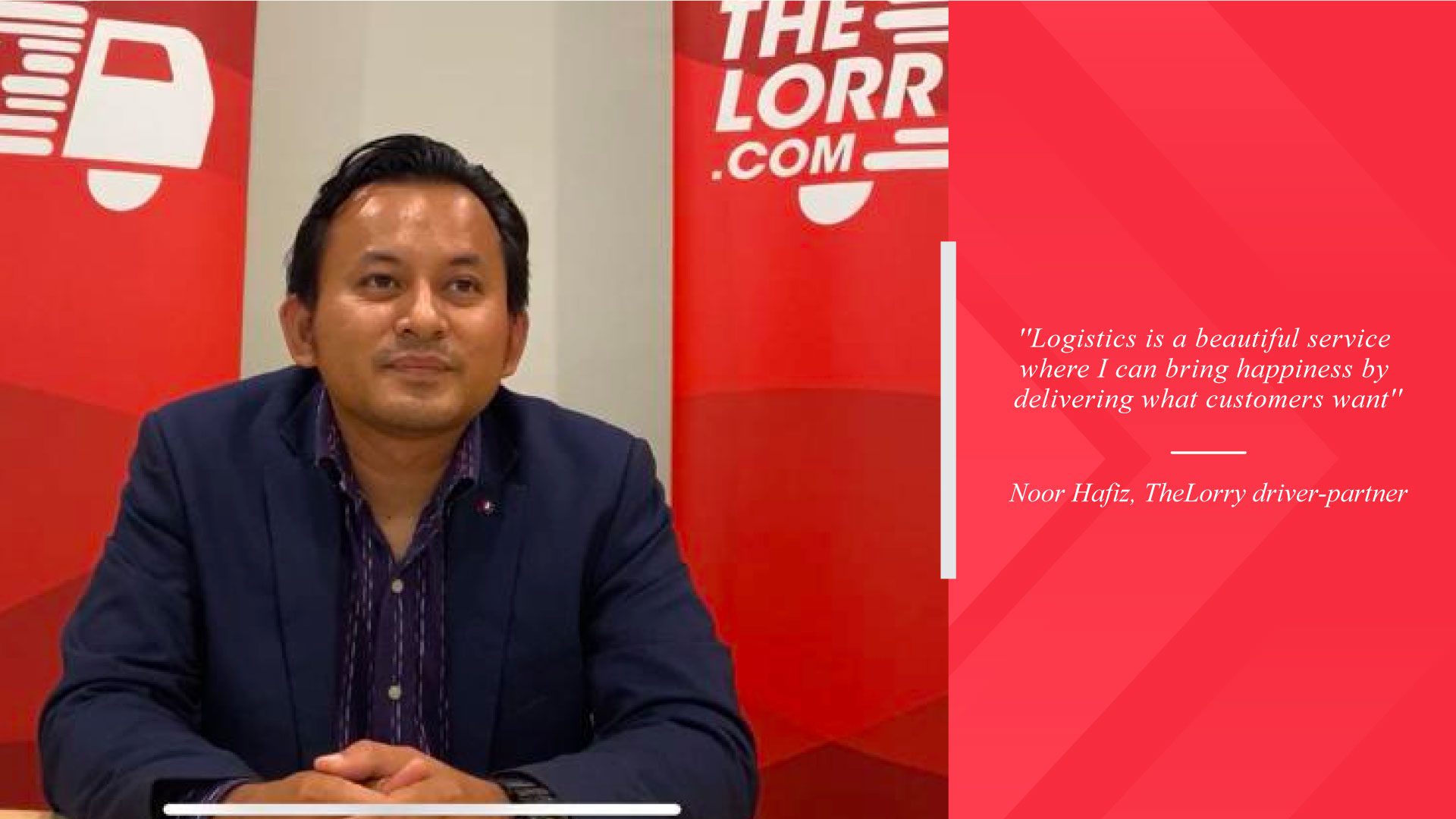How TheLorry is Reducing Logistics Costs in 2025
At TheLorry, our mission has always been simple — to reduce logistics costs in Malaysia while improving efficiency for businesses, affordability for customers, and earnings for drivers. We’ve often been called the “Uber for lorries,” but our vision goes deeper. By leveraging technology and smarter route optimization, we’re now entering Stage 2 of our plan: cutting unnecessary expenses in road freight so that every ringgit you spend goes further.

Turning a Vision Into Reality, Stage 2 – Bringing Down the Cost of Logistics
by TheLorry on 12 August 2025.
At TheLorry, we’ve often been called the “Uber for lorries” — a quick way to explain our on-demand lorry booking service. But our inspiration goes far beyond matching customers with drivers. From the very beginning, we have admired how AirAsia disrupted air travel by making it affordable for everyone.
Our dream is simple but powerful: reduce logistics costs in Malaysia so that businesses save more, customers pay less, and drivers earn better incomes. Today, we’re ready to launch Stage 2 of our vision — maximizing truck capacity utilization to slash freight expenses by up to 40%.
To read on TheLorry’s journey you may refer to these articles, that would bring you up to speed on what we have done so far:
- Panduan Lengkap Memulakan Bisnes Pengangkutan Lori (Bhg 1)
- Panduan Lengkap Memulakan Bisnes Pengangkutan Lori (Bhg 2)
- Panduan Lengkap Memulakan Bisnes Pengangkutan Lori (Bhg 3)
- Panduan Lengkap Memulakan Bisnes Pengangkutan Lori (Bhg 4)
The vision hasn’t changed after 2 years, we are still working to be the go-to place when someone needs a lorry (or van or pickup truck).
I’m glad to say our hard work has paid off, currently we have a 98% fulfilment rate, and the platform is highly automated compared to when we started the business.
I feel it is the right time to work on stage 2 of our vision – bringing logistics cost down.
Why Stage 2 Matters: The AirAsia Analogy
AirAsia proved that high capacity utilization — filling more seats per flight — brings down the cost per passenger. In road logistics, the principle is the same. Malaysia has hundreds of thousands of commercial vehicles, but many return empty after completing a delivery. This is wasteful, and customers end up paying for the empty return trip.
Imagine a world where every driver picks up another job on the way back. If they can offer both trips for 60% of the current rate, drivers would earn 20% more, and customers would save up to 40%. This is the cost-efficiency sweet spot we are targeting.
I’ve always admired how AirAsia made affordable travel happen. They truly lived up to their slogan – Now everyone can fly. What is the secret to it, you may ask? As anyone with a basic understanding of math will happily tell you, high capacity utilization drives unit cost down, given a fixed operating cost.
I would like to relate that to road freight – if AirAsia with hundreds of airplanes could make affordable traveling a reality, then the road logistics industry must have a bigger potential since there are hundreds of thousands of registered commercial vehicles in the country.
If the capacity utilization can be maximized (or close to it), the cost should go down by a lot. With that, the cost of doing business will be lowered and end users could enjoy a lower cost of living.
Having signed up thousands of drivers on our platform, we have always heard about their primary concern – having a one-way traffic.
The Empty Trip Problem in Malaysia’s Logistics Industry
Our drivers tell us the same story:
“I deliver from Point A to Point B, but return with an empty truck.”
This “one-way trip” challenge inflates costs. Customers unknowingly pay for both legs of the journey, even if only one leg carries goods.
Our solution? A national freight matching system where a return journey is always paired with another customer’s delivery needs — the trucking version of ride-sharing.
Most days they will have delivery from point A to point B but returning to A with an empty vehicle. What if this problem could be solved? What impact would it bring to the drivers or even the whole society?
Imagine this – now you are paying the full 100% cost for two-ways, as drivers would need to cover their cost returning to origin.
What if they could always find another job on their way back? If they charge 60% of the current price for both ways, they would end up with 120% of what they earn now. Customers then save up to 40% each.
This is, of course, easier said than done, but not impossible. I feel the industry is lacking a player to put all the stakeholders together in terms of resources optimization.
Even though there are a large number of commercial vehicles, they are owned by many different companies and individuals who are not collaborating and working with each other in a robust platform. Talk about sharing economy, this is exactly what the trucking industry needs.
We feel that it is the right time to push this forward.
As of now, we have high % of fulfilment. In other words, we have a sustainable ecosystem whereby the supply (drivers) is sufficient to support the demand (customers).
After 2 years of pitching how technology would change the industry, we can see that the user behaviour on both sides have changed significantly.
How TheLorry is Solving It with Technology
When we first started, many drivers were reluctant to use smartphones. Fast forward two years, and now thousands of drivers rely on our platform to earn their livelihood. The trust is built, the ecosystem is mature, and the timing is right.
We’re now launching features that will:
-
Match return trips automatically with nearby delivery requests
-
Increase driver earnings by filling what used to be empty kilometers
-
Lower logistics costs for businesses and consumers
-
Reduce carbon emissions by optimizing truck usage
This is not just cost-saving — it’s sustainability in action.
The drivers who were once so reluctant to use smartphones to carry out their jobs are now dependent on these devices to make their living. It is easy to get them to use a new feature now that would further enhance their income.
If all our drivers (thousands of them) start using this feature, we would have thousands of return trips a day which customers could benefit from. Bear in mind, that is only a low single-digit % of total registered commercial vehicles in the country.
Some may argue that it would cannibalize our existing business.
We are looking at it from a different perspective. If this becomes a reality, everyone (no matter what business you are in, you would most likely have logistical needs) would benefit from a lower logistics cost, and the savings would then be passed down to end users.
It would be a cyclical effect that people can then purchase more hence pushing volume higher. We see it as a win-win-win situation for transporters, customers, and us being the facilitator.
With more volume created through a lower logistics cost, drivers can potentially earn a higher income.
Changing Perceptions: Lorry Drivers as Professionals
We want Malaysians to view lorry drivers as skilled professionals, just like airline pilots. They move the economy, connect businesses, and help keep costs down for everyone. With higher incomes and better working conditions, we can elevate this profession’s image across the country.
It is also our sincere intention to change the perception we as Malaysians have towards lorry drivers, we hope they can be regarded as professionals one day, and people would not be ashamed of being a lorry driver. They are earning an honest income through their hard work, no different from pilots!
To recap, our grand vision consists of multiple stages, and we are only initiating stage 2 now:
- Recruit enough supply to run an on-demand business
- Leveraging on the huge network to achieve cost efficiency by maximizing capacity utilization
- More to come!
To make this a reality, we need buy-in from customers and drivers. It is going to be a long-term mission, but once they see the benefits, there’s no reason for them to not support the idea!
Delivering The Future,
Chee Hau
Be Part of the Movement
If you’re ready to save on logistics and support a more sustainable transport industry in Malaysia, let’s make it happen together. Whether you’re booking a lorry for personal or business needs — or joining as a driver — you’re contributing to a smarter, more connected freight network.
👉 Chat with us on WhatsApp to get started today.
Choose the Smarter Way to Move, Transport, and Save
We know the struggles — moving day headaches, spiraling transport costs, wasting hours finding a reliable driver, and the sinking feeling when you realize you’re paying for an empty return trip. That ends here.
-
House Moving Package – No more inflated quotes or unreliable movers. Our all-inclusive, transparent pricing ensures your home move is stress-free and budget-friendly.
-
On-Demand Lori Sewa – Need a lorry today? Forget calling ten drivers. Book in minutes, get instant confirmation, and track your vehicle in real time.
-
Disposal Service – That old sofa, broken fridge, or pile of junk taking up space? We’ll remove it quickly, legally, and without hidden fees.
-
Cross-Border Service – Whether it’s Singapore, Thailand, or beyond, move goods across borders with a trusted logistics partner who handles the paperwork and keeps your cargo safe.
💡 Why pay more and stress more when you can book smarter, faster, and cheaper with TheLorry?
Frequently Asked Questions (FAQ)
What is TheLorry’s Stage 2 vision?
How does TheLorry reduce logistics costs?
Is TheLorry’s service worth it for businesses?
Who can use TheLorry’s platform?
Where to book TheLorry services?
How much does TheLorry service cost?





 MY – EN
MY – EN Singapore
Singapore Indonesia
Indonesia